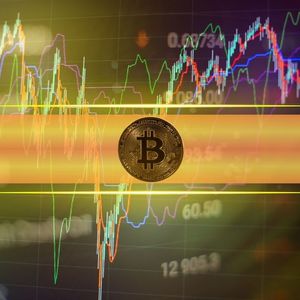Market Pulse
The convergence of traditional finance (TradFi) and blockchain technology is rapidly gaining momentum, primarily driven by the burgeoning sector of Real-World Asset (RWA) tokenization. This innovative approach involves transforming tangible and intangible assets, from real estate and commodities to intellectual property and fine art, into digital tokens on a blockchain. As of {current_date}, the RWA market is experiencing significant growth, attracting institutional interest and offering unprecedented opportunities for liquidity, transparency, and fractional ownership across various asset classes.
What is Real-World Asset (RWA) Tokenization?
RWA tokenization is the process of creating a digital representation, or token, of an asset on a blockchain. This token serves as a verifiable, immutable record of ownership and can be traded, managed, and utilized within a digital ecosystem. The underlying asset remains in the physical world, while its digital counterpart facilitates seamless transactions and broader market access. This mechanism leverages the security and transparency of blockchain to unlock new efficiencies in asset management and trading.
- Digitization of Ownership: A legally binding representation of ownership is recorded on a blockchain.
- Improved Liquidity: Traditionally illiquid assets can be fractionalized and traded more easily.
- Enhanced Transparency: All transactions are recorded on a public ledger, increasing auditability.
- Reduced Intermediaries: Streamlines processes by potentially cutting out several layers of middlemen.
- Global Access: Opens up investment opportunities to a wider, global investor base.
The Trillion-Dollar Opportunity
Analysts and industry experts project the RWA tokenization market to reach multi-trillion-dollar valuations in the coming years. Major financial institutions, including BlackRock and JP Morgan, have already made significant strides in exploring or implementing RWA solutions, signalling a strong institutional conviction in its long-term potential. This growth is driven by the clear benefits it offers over traditional asset management, such as reduced costs, faster settlement times, and broader investor participation.
Key areas poised for significant tokenization include:
- Real Estate: Fractional ownership of properties, making real estate investment more accessible.
- Debt Instruments: Tokenized bonds and credit facilities offering new financing avenues.
- Commodities: Digital representations of gold, oil, and other raw materials for easier trading.
- Private Equity & Venture Capital: Unlocking liquidity in traditionally locked-up investments.
- Intellectual Property & Royalties: Facilitating transparent and automated revenue distribution.
Challenges and Regulatory Landscape
Despite its immense promise, RWA tokenization faces several hurdles, particularly concerning regulatory clarity and legal frameworks. The intersection of traditional asset law and nascent blockchain regulations creates a complex environment that requires careful navigation. Jurisdictions are gradually developing frameworks, but a globally harmonized approach is still distant. Furthermore, ensuring a robust legal ‘wrapper’ that connects the on-chain token to the off-chain physical asset is paramount for investor confidence and legal enforceability.
Technological challenges also persist, including the need for scalable and secure blockchain infrastructure, robust oracle solutions for price feeds, and interoperability between different tokenization platforms. Overcoming these challenges will be crucial for the widespread adoption and successful integration of RWAs into mainstream finance.
Conclusion
Real-World Asset tokenization stands as a pivotal development in the evolution of financial markets, offering a transformative pathway to bridge the gap between conventional assets and the digital economy. While regulatory and technical complexities remain, the accelerating institutional interest and the profound benefits of increased liquidity, transparency, and accessibility suggest that RWA tokenization is not just a passing trend but a fundamental shift towards a more efficient and interconnected financial future. Its continued growth promises to reshape how we perceive, own, and trade assets globally.
Pros (Bullish Points)
- Unlocks massive liquidity for traditionally illiquid assets, broadening investor access.
- Enhances transparency and efficiency in asset ownership and transfer through blockchain technology.
Cons (Bearish Points)
- Complex and evolving regulatory landscape creates uncertainty and legal hurdles.
- Requires robust legal frameworks and technological infrastructure to seamlessly link off-chain assets with on-chain tokens.



